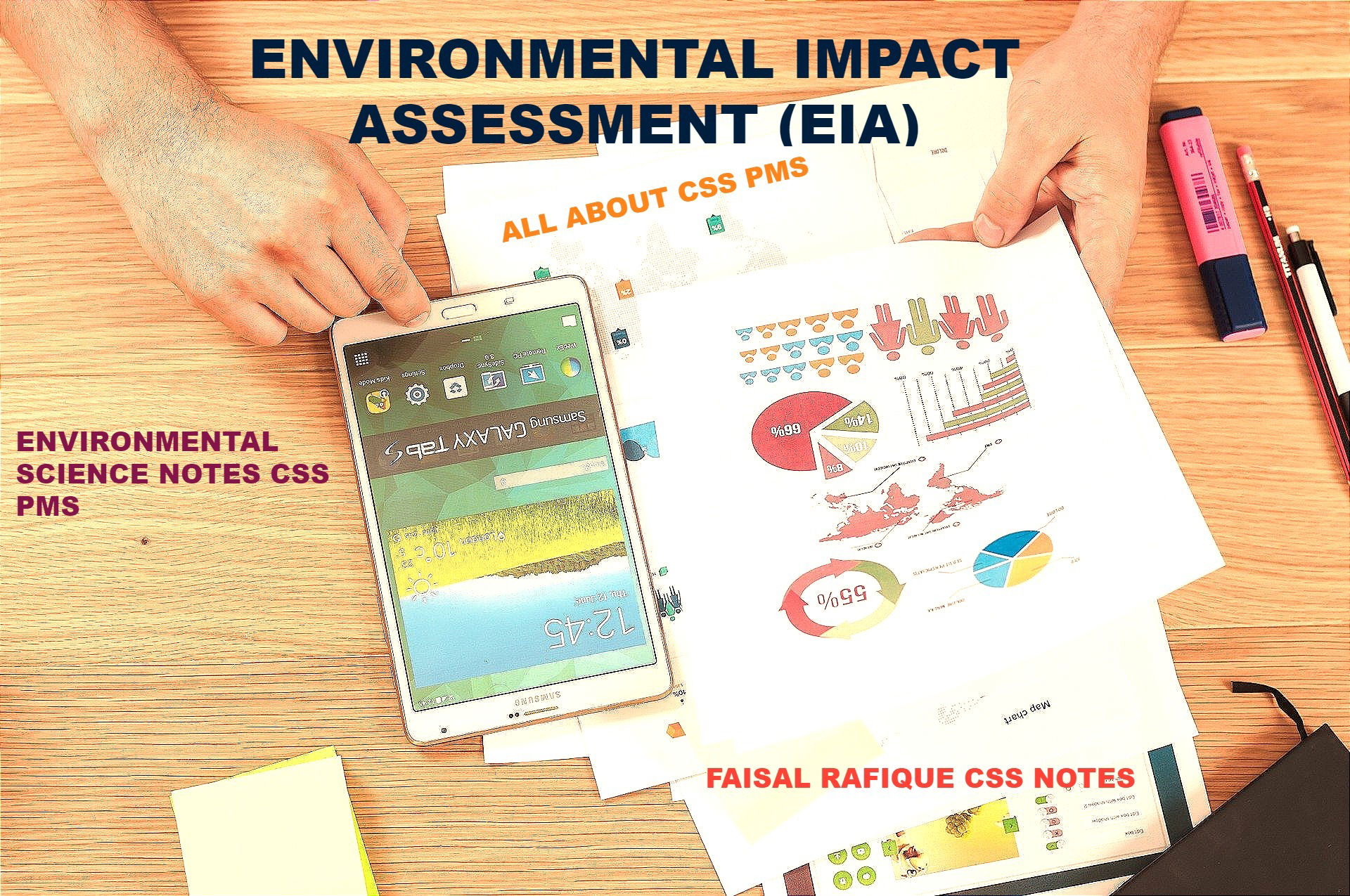Environmental Impact Assesment (EIA) :

STATEMENT:
It is a formal process to identify, evaluate, predict, avoid and to reduce the environmental effects caused by any project or activity.
Objectives of EIA:
a) Ensuring Environmental protection.
b) Promotion of sustainable development.
c)Integration of Environmental considerations into the planning processes.
Conduction/Process of EIA:
It consists of multiple steps.
1. Project screening:
a) Type of project.
b) Location of Project(Area).
c) Cost of Project.
d) Time Period expected.
==> Gathering of General information.
2. Project Scoping:
a) Social lens.
b) Economic lens.
Living Standard, economy will rise or not.
3.Base line data collection:
==> Site visit
==> Data collection
- Forest cover near site
- water bodies
- lake, pond
- River
- Aquatic life (fisheries)
- Crop lands
- Topography (mountain, forest, terrain)
- Population
Either construction is suitable at daytime or at night.
4. Identification of environmental effects:
Data Collection
- Forest cover (deforestation)
- Crop land (land pollution)
- Lake (water pollution) (Eutrophication) (Biodiversity loss)
- Road (Air pollution)
- Change in local temperature
5. Impact Prediction:
Factory ==> noise pollution (near population)
Factory ==> Solid waste (lake)
3 lane road ==> carbon emission effect the atmosphere.
6.Mitigation Measures:
2 Lane road ==> to mitigate the measures.
Factory ==> solid waste management measure
- Air pollution measures
- Noiseless machines
- Clean energy
- Use of incinerators
7. Public consultations:
Pakistan Environmental Protection Agency (PEPA)
public notice in newspaper to know about public opinion according to the Section-12 of PEPA act 1997
Approval by EPA
After that EPA will approve the project.
8. Environmental Monitoring (during the Project):
Monitoring during the project to check either the project is on the recommendations or not. EPA will seal the project if the project is not according to the recommendation of EPA.
9.Environmental Audit:
It is like financial audit
==>After completion of Project.
EIA document, recommendation, finalizing
After that EPA will have its final visit in which EPA will ensure the following
- Air pollution is controlled or not.
- Noise pollution is controlled or not.
- Waste management mitigated or not.
NOTE:
If these measure's were not taken then EPA will fine or sealed that location.
EIA in Pakistan:
According to the section-12 of Pakistan Environmental Protection Agency Act 1997.
a) No proponent of any project can commence/initiate the Project without considering EPA.
b) EPA is responsible to ensure the compliance with the national quality standards regarding EIA.
c) Public participation is mandatory.
Section-12 of the PEPA act 1997. Except the issues related to the following.
- International trade.
- Commercial.
- Production.
- Manufacturing.
- Scientific.
- National Security matter.
d)EPA is responsible to communicate approval or dis-approval, with in four months.
e) EPA is responsible to maintain the separate registers for EIA and IEE (Initial Environmental Examination) record maintenance.
Benefits of EIA:
a) EIA helps in identifying the environmental effects.
b) It helps in predicting the intensity of environmental effects.
c) It helps in mitigating Environmental effects.
d) It helps in controlling Environmental Pollution (air, land, water, soil, etc.)
f) It helps in controlling global warming and Climate change.
g) It helps in maintaining bio-diversity.
h) It helps in avoiding forest cover.
i) It also helps in improving environmental awareness.
j) It also helps in engaging potentially effected communities.
k) It also helps in sustainable development.
l) It also helps in sustainable urbanization.
m) It also helps in managing urban centers.
n) It also helps in controlling/reducing the over-exploitation of natural resources.